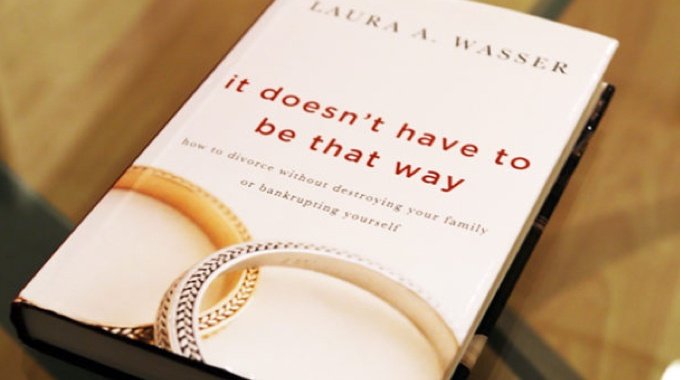When it comes to uncontested divorce, most people recognize that it can be messy, time-consuming and expensive – the complete opposite of convenience. However, it does not have to be that way. There is a solution: uncontested divorce.
Today, everyone is looking to streamline their life. From ordering meal delivery to dating, shopping and banking online, convenience is key. But not all aspects of our complicated lives are quick and painless.
It’s Over Easy is an online divorce platform designed to facilitate the uncontested divorce process and end your marriage in an amicable and stress-free way, all from the comfort of your computer, without involving lawyers or trips to court.
Create an account to start
your uncontested divorce filing
It won't take long, the process is clear, and customer support will help you with any questions
If you’re thinking that a lawyer-free uncontested divorce sounds like a better option for you, read on for general information about the divorce process. While this article will contain specific information on the laws and regulations in California and New York, many of the principles discussed are also applicable to other jurisdictions.
What is an uncontested divorce?
An uncontested divorce is a divorce in which the spouses agree on all the material terms of the divorce and do not need the court to divide assets or make determinations for them about spousal or child support or custody.
On the other hand, in a contested divorce, one or both parties disagree about the terms of the divorce – whether about if the divorce itself should happen, division of assets, allocation of debts, alimony, child support or custody of children.
Pro Tip: Moving away during and after your divorce
In both New York and California, an uncontested divorce requires that one party begin the process by filing a petition or summons for divorce with the court.
Before filing for divorce, you must be sure that you satisfy the residency requirements for your prospective jurisdiction. Don’t fret, because residency requirements are generally easy to fulfill if you or your spouse are a resident of the state. In many states, if at least one of you have lived in the area for the required time, you can proceed with your divorce even if your spouse re-locates.
Keep in mind that some jurisdictions require in-person appearances in court, which may necessitate the person who has re-located to return for mandated court hearings.
It’s Over Easy assists in these preliminary steps by asking you tailored questions about your marriage, using your answers to ensure that you meet the residency requirements and properly complete the initial forms. It’s Over Easy will even file the necessary forms with the court and aid in serving your spouse with the summons.
Thereafter, it is up to you and your spouse to start communicating and negotiating the terms of your divorce together. It’s Over Easy also provides you with an Index of family law experts, child custody experts and family counselors, and you can easily and economically navigate through these issues and still complete an uncontested divorce.
Why Opt for Uncontested Divorce?
1. Uncontested divorce usually requires less time
In a fast-paced world, there are several reasons for choosing an uncontested divorce. The process is generally quicker than a contested divorce because there is no need to appear in court.
Although divorces in California do require a minimum of 6 months to be finalized, avoiding court will save significant time, money and heartache in any state. The pre-trial process, the appearances in court, the trial itself and the significant delays inherent in any court system, regardless of jurisdiction, add significant time and impediments to receiving a final judgment on your marriage.
Settling your issues outside of court is especially helpful if you have children, as you can avoid the tension and trauma of dragging your children though the court’s costly and time-consuming child support and custody proceedings.
2. Uncontested divorce is cheaper
Because of the speedier nature of an uncontested divorce, the costs are dramatically lower than the costs of a contested divorce. The average cost of a contested divorce in the United States is around $15,000. Conversely, non-attorney uncontested divorces can cost as little as the filing fees. It’s Over Easy is an economical choice for couples, with pricing starting at $9 per month.
3. Retain control and privacy during the process
Another overlooked advantage of an uncontested divorce is the ability of the divorcing couple to maintain privacy and control over the process. Relinquishing control to attorneys and judges forfeits a couple's ability to be masters of their own destinies and shape the outcome of issues like alimony, child support, and coparenting
It’s Over Easy provides couples with tools to facilitate the divorce themselves, without the need for attorneys or a judge to control the process. Our divorce platform provides information on negotiating support, determining custody, and creating coparenting schedules for couples with children. We make it easier for spouses to navigate the logistical issues of marital dissolution without involving other parties.
Pro Tip: The best coparenting schedule for parents sharing child custody
For the average couple, divorce need not be the horrible nightmare it is portrayed to be. An uncontested divorce is a quicker and less-painful option, and It’s Over Easy provides an attorney-free, self-directed solution to help couples navigate this process.
How do I handle finances in an uncontested divorce?
Pro Tip: The difference between common-law and community property
Whether you are getting a traditional divorce, an online divorce or a divorce recourse, it is highly recommended that you seek advice from an investment professional or financial advisor. It is never good to handle investments and finances alone during your divorce. Look for a "Certified Divorce Financial Analyst" in your area. These individuals often act as mediators for both parties, even in uncontested divorces.
In addition to working out the best possible outcome for you financially, divorce experts will help to keep you and your spouse calm during your financial negotiations, especially in discussions related to child support and spousal support. Considering the fact that many couples let their emotions get the best of them during a divorce, this is extremely beneficial for everyone involved.
Analysts are used by many individuals worldwide, both during traditional divorces and online divorces.
Figure out if you live in a Community Property or Equitable Distribution state
The geographic area you and your spouse reside has a big impact on how assets and debts will be allocated after your divorce.
Community Property states – Arizona, California, Idaho, Louisiana, Nevada, New Mexico, Texas, Washington, Wisconsin and U.S. territory of Puerto Rico – determine that any assets or debts acquired before the marriage are considered personal property, and anything acquired during the marriage is community property.
All other US states follow Equitable Distribution, which requires a judge to decide what the fair split of community property should be. This usually results in the higher-earning spouse getting two-thirds of the property, and the lower earning spouse getting one-third.
Understanding which financial process you and your spouse are required to follow based on where you live is the first important step to managing your finances in a divorce.
Pro Tip: How divorce can impact your inheritance
Identify Assets and Debts Acquired Before Your Marriage
Take time to conduct an audit of your finances to identity what was acquired before and after your marriage. This will enable you to assess your personal property independently of your community property.
Unfortunately for those who learn this after the fact, it may already be too late. Asset difficulties are one of the most common issues couples face after splitting up.
Educate Yourself on Divorce and Be Realistic
The divorce experts at It's Over Easy conclude that, instead of trying to get everything done quickly, it is important that you spend time educating yourself and being realistic about your financial needs. Often times, individuals who have lived somewhat lavishly find themselves nearly broke after their marriage ends – even if they use more cost-efficient options like an online divorce or divorce recourse. This is usually because couples do not understand how the laws of their state will mandate the division of community property.
According to the senior vice president of wealth management at UBS in Philadelphia, the next step after divorce is to plan for your life as a single person, and adjust your budget accordingly. Though this may call for selling certain belongings or reprioritizing your weekly spendings, it is beneficial in the long run and will save you a lot of stress.
Pro Tip: Understanding Online Divorce
An overview of the ten steps required to obtain an uncontested divorce in the state of California.
Step 1. The Petitioner, or person who will be filing the divorce court case, decides:
- How do I want to legally end this marriage with my spouse?
My choices are:- Divorce
- Legal separation
- Annulment
- If choosing a divorce, do I qualify for a summary dissolution?
Click here to find out
- Can I file in California? If yes, what county or counties can I file in?
Click here to find out
- How much will filing cost me?
Download the fee schedule here
- What are the special divorce procedures in my local court in my county? What local form paperwork and how many copies do I need?
Click here to find out
Step 2. Am I able to communicate with my spouse to try and figure out an agreement about the terms of our divorce or legal separation?
- If we can, we may save on filing fees and time by having to go to court less.
- We can work out our disagreements with a mediator instead of a judge.
Step 3. The petitioner (the person who will file) completes all the required forms
- Click here to download paperwork
Step 4. The Petitioner files their court forms
- This means taking the forms to the courthouse and giving them to a court clerk who will then put the paperwork in a file that will begin the case. They will then stamp the photocopies as ‘filed’.
- There is a filing fee to file the court forms.
- If you cannot afford the fees, you can apply for a fee waiver
Step 5. A legal adult (18 and older) who is not involved in the case, serves the respondent, or other spouse, copies of the court paperwork.
- This is because when a lawsuit is filed the person being sued (the respondent) has a right to be notified about it.
- This is called “service of process” and needs to be done with enough time for the respondent to go to court to tell the judge their side of the story before they make a decision.
- The person who served the copies to the respondent must fill out a form called “proof of service” that shows they have given the correct forms to the respondent in the correct way
- The petitioner will then file the proof of service form with the court clerk
Step 6. The respondent decides how they would like to handle the divorce case
- The respondent will decide if they would want to file a response with the court. If they do not, then the judge will decide how to end the marriage without hearing the respondent's side.
- Or, they can try to work out an agreement with the petitioner about the terms of the divorce. If there is domestic violence in the relationship please proceed differently*
Step 7. If the respondent chooses to file a response they need to complete the proper paperwork, and then file them with the court clerk.
- They will have 30 days to file their court divorce forms after being served the petitioner’s paperwork.
- The respondent will file the papers at court and will have to pay the filing fee.
Step 8. A legal adult (18 and older) who is not involved in the case, serves the petitioner a copy of the respondent’s court forms
- The person who served the court divorce forms will fill out a “proof of service” to show they have given the correct forms in the right way.
- The respondent will file that proof of service form with the court clerk
Step 9. Each side will exchange financial documents that declare what they own and owe. This process is called “preliminary declaration of disclosure”
- This disclosure will help both parties involved in the divorce divide their property and debt.
Step 10. The court approves and signs a judgment to let a couple become divorced or legally separated.
The terms of the divorce is part of the judgment and is dependent on whether the respondent filed a response or whether the couple can reach a mutual agreement about the terms.
- You cannot legally end your marital status until at least six months after the case is filed and the respondent is served with a copy of the petitioner’s paperwork.
- The divorce will not become final on its own. One or both sides will have to file more paperwork before that happens. Please follow all the steps to make sure your divorce is finalized.
- If the couple can reach an agreement about all their issues, then they may not need to go in front of a judge.
- If they cannot reach an agreement, they must go to court to come to an agreement about their issues.
Step 11. Read "It Doesn't Have To Be That Way: How To Divorce Without Destroying Your Family Or Bankrupting Yourself" by It's Over Easy founder Laura A. Wasser
You will laugh at the funny things she writes and be better prepared for what is ahead of you and your spouse as you navigate your divorce online.








Comments